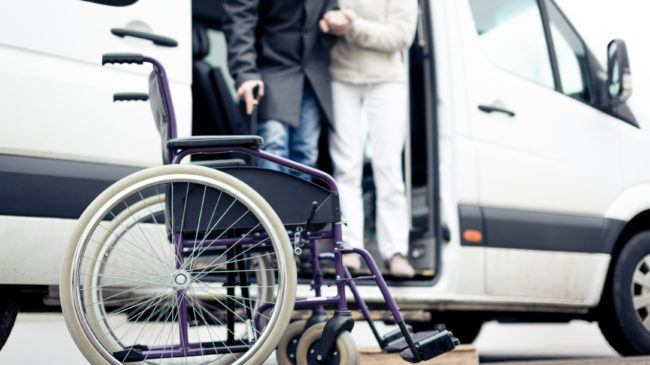People with disabilities use transit seven times as much as the general population.
Unfortunately, existing transit service does a poor job of connecting them to work. Paratransit vehicles often arrive late and without the proper equipment. Riders sometimes are stranded for hours at a time. As a result, people with disabilities are far more likely to be underemployed or unemployed, despite being 1.5 times more likely to be highly educated compared to the general population. This vexing problem led the Massachusetts Bay Transportation Authority (MBTA) to explore an alternative to traditional paratransit.
In an effort to increase customer satisfaction and decrease cost, the Massachusetts Bay Transportation Authority created a trial program using ride-hailing services Uber and Lyft. Four percent of all MBTA paratransit customers are involved in the trial, which gets high marks for rider satisfaction. Uber and Lyft receive a customer score of +85, while the MBTA’s overall score is -11.
Unfortunately, the trial has been disappointing from a cost-saving perspective. The transit agency had hoped for savings of 10 percent to 20 percent over traditional paratransit. In reality, at a subsidy of $40 per trip, the savings have been only about 1 percent.
Minor changes to the program are needed to improve quality at a lower cost. For instance, riders should be encouraged or given incentives to use carpools, important trips to the doctor’s office should be prioritized, and those who provide better service should be allowed to charge more.
Transit officials have an excellent opportunity to reform and improve their transit systems by creating partnerships with ride-hailing companies. Agencies are encouraged not to duplicate the Massachusetts Bay Transportation Authority’s program in total, but to learn from the mistakes and customize a program for each region’s geographic area. Specifically, and in sum:
- MBTA’s pilot program should serve as a model for transit agencies throughout the country.
- The paratransit program should consider operating in a similar manner to the Boston-area pilot. In these metro areas, the program would be permanent, and Uber and Lyft would provide all paratransit service in the metro areas. Paratransit would complement ongoing fixed-route transit.
- Federal lawmakers should allow non-union entities to provide transit.
- There are several programmatic changes that transit agencies should consider adopting as part of a new paratransit on-demand model:
- Encourage carpooling for non-emergency trips;
- Refine priorities for more time-sensitive trips; and
- Tier the costs.
- There are several programmatic changes that private providers and policymakers should consider adopting as part of a new paratransit on-demand model:
- Provide vehicles for riders with physical disabilities;
- Work to create new insurance offerings;
- Allow non-unionized provision of transit service; and
- Seek cooperation with private transit providers.
Making these changes will not be easy. However, the alternative of the status quo of mediocre service at increasingly unaffordable costs is not a realistic option. Transit agencies should consider this new way forward.
Full Policy Brief: Providing Cost-Effective High-Quality Paratransit Service

